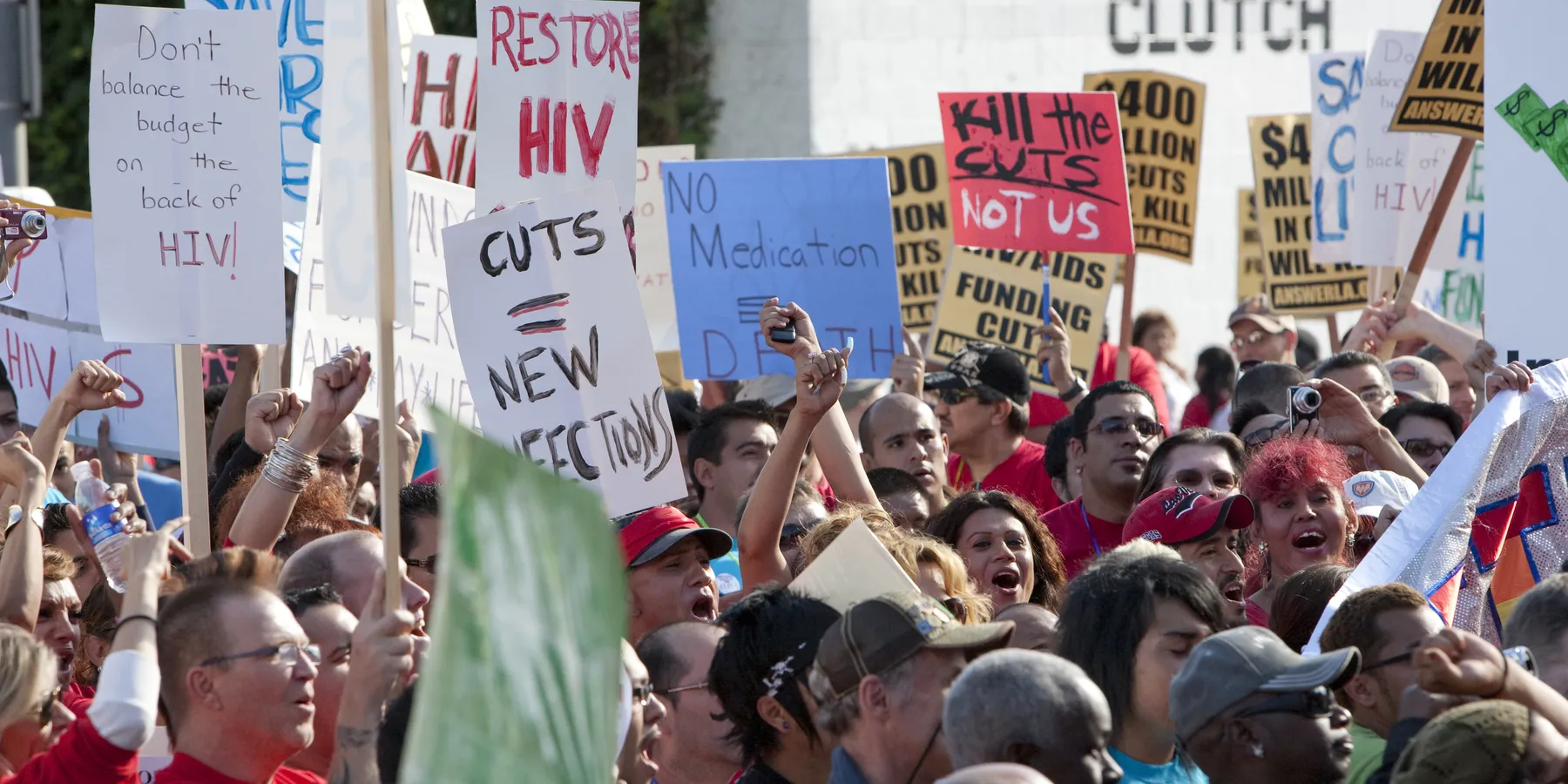For the generation of infectious diseases physicians who have become my teachers, mentors, and friends, the early years of the HIV pandemic had a monumental influence on their lives. Many were drawn to the field to confront unprecedented challenges in medicine, public health, and justice that first emerged in the medical literature in the spring of 1981.1 Ethical challenges were numerous, with political figures refusing to acknowledge the ongoing crisis, physicians afraid to treat patients with HIV, and policymakers neglecting and othering patients or members of the public at risk, including children. Such responses occurred amidst mainstream explicit homophobia, sex negativity, economic conservatism, and limited scientific understanding of the virus and its transmission, such that consistently effective interventions were unavailable until 15 years after the first reported cases.2
Decades later, much seems to have changed. In October 2019, the US Department of Health and Human Services launched Ending the HIV Epidemic: A Plan for America. This 4-part program has been thoughtfully designed to leverage decades of advances in HIV testing, treatment, and prevention to reduce virus transmission by at least 90% by 2030.3
This issue of the AMA Journal of Ethics explores justice and equity, tensions between individual and public health priorities, and competing narratives about how to understand ongoing ethical questions. Both the nature and the scope of ethical challenges related to HIV have evolved over time; the purpose of this theme issue is to illuminate how these evolutions have played out during the Ending the HIV Epidemic program. During the planning of this theme issue in early February 2020, days before recognition of the global dissemination of COVID-19, we asked about the AIDS pandemic: What does it mean to bring a devastating pandemic, which has preoccupied public consciousness and poignantly drawn attention to structural inequity, to a just end?
The COVID-19 pandemic has raised familiar questions but on an accelerated timeline. Calls for swift, scientifically informed government responses to patients’ and communities’ needs and vulnerabilities; nondiscriminatory narratives about SARS-CoV-2’s origins; equitable resource allocation; transparency in intervention development and delivery; and simple acknowledgement of the stakes echo calls from decades ago about HIV. Health professionals and citizens whose earlier lives were shaped by HIV awareness face new political obstacles,4 social and cultural division, and unabashed expressions of White supremacy that undermine our individual and collective capacity for healing. Those new to health care practice have been told that COVID-19, like AIDS for their predecessors, will be unmatched and career defining.
Experts in infectious diseases, public health, ethics, and justice who have contributed to this issue of the AMA Journal of Ethics have done so under extraordinary circumstances. They have been treating hundreds of their own patients who are afraid of, diagnosed with, or dying of a terrifying new disease that could be mitigated substantially through behavioral modification and empowered public health institutions. They have been raising their voices in opposition to racial and ethnic inequities in health, police brutality, and deeply entrenched, pervasive racism. These dimensions of the contemporary pandemic context demand our attention if we are to think more powerfully about and respond more effectively to communicable diseases now and in the future. Each time we respond to a new outbreak, the actions, interventions, or sacrifices that we ask of ourselves individually and collectively influence others across space and time. Contagion evokes intense emotions, such as fear (particularly racialized fear), which can too easily be exaggerated and misdirected toward persons (particularly persons with minoritized identities) rather than diseases. And infectious diseases, unlike causes of heart disease or chronic lung disease or cancer, can emerge suddenly and evolve quickly. While there is cause for hope, it remains to be seen whether Ending the HIV Epidemic will achieve its goal of reducing HIV infections in the United States and, if it does, whether it will last. It also remains to be seen whether transmission reduction can be achieved internationally in places where the burden of HIV infection is higher and the resources available to prevent it and respond to it are often fewer. And, as we have already seen with COVID-19, new outbreaks and new retellings of pandemic stories will begin before this one ends.
References
-
US Department of Health and Human Services; Minority HIV/AIDS Fund. A timeline of HIV and AIDS. Accessed June 29, 2020. https://www.hiv.gov/hiv-basics/overview/history/hiv-and-aids-timeline
- Bayer R. Clinical progress and the future of HIV exceptionalism. Arch Intern Med. 1999;159(10):1042-1048.
-
US Department of Health and Human Services. What is Ending the HIV Epidemic: A Plan for America? HIV.gov. Accessed December 4, 2020. https://www.hiv.gov/federal-response/ending-the-hiv-epidemic/overview
-
HIV Medicine Association. Health Heroes Act addresses critical COVID-19 needs, should be strengthened. Updated May 13, 2020. Accessed June 29, 2020. https://www.hivma.org/news_and_publications/hivma_news_releases/2020/health-heroes-act-addresses-critical-covid-19-needs-should-be-strengthened/




